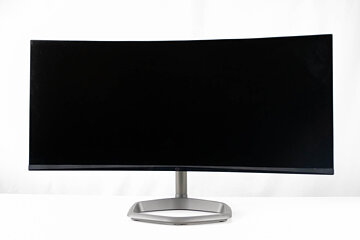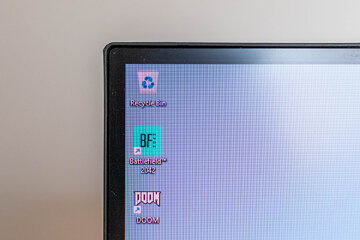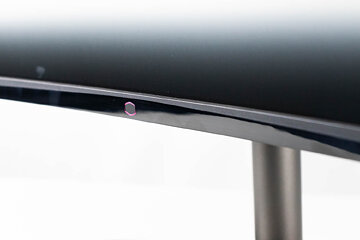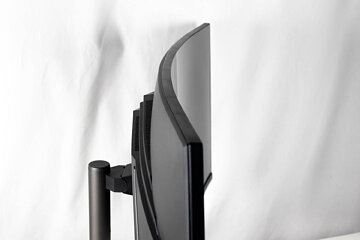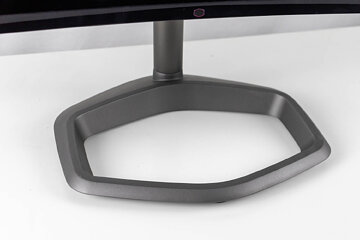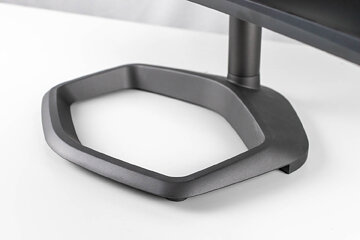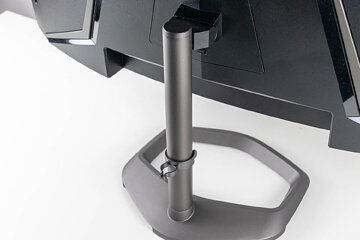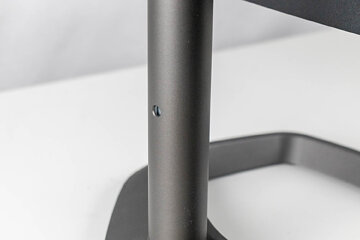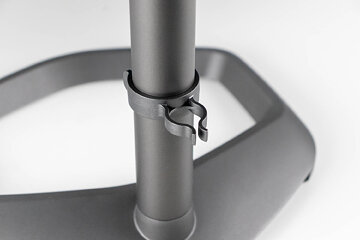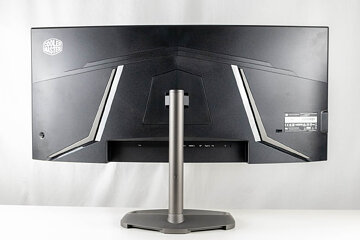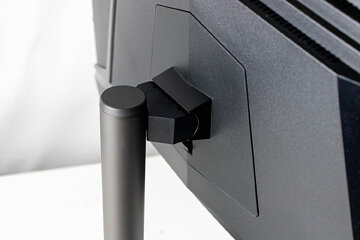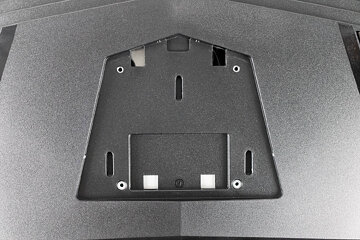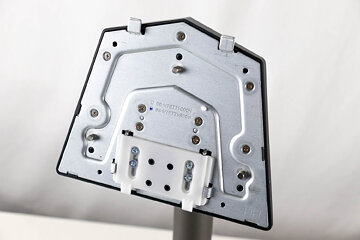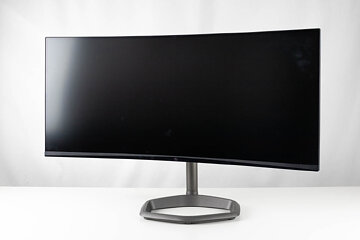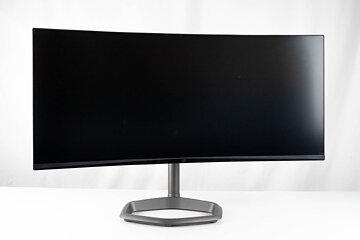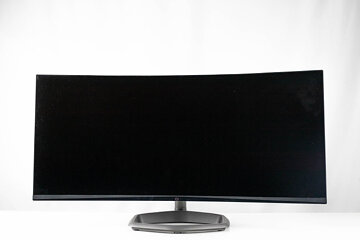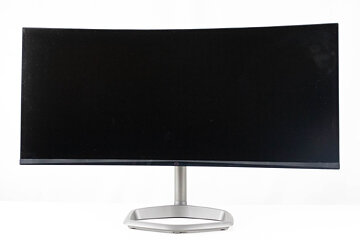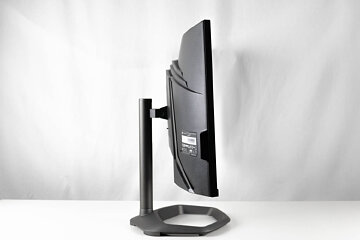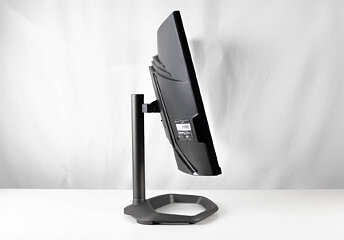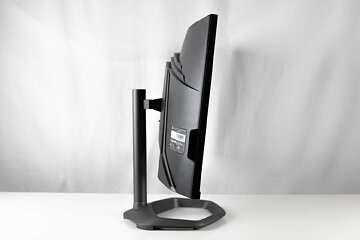 9
9
Cooler Master GM34-CWQ2 Review - Win Some, Lose Some
Connectivity & Power Consumption »Design and Ergonomics
While the Cooler Master GM34-CWQ2 looks mostly the same as its predecessor, there are two details to note. The more obvious one is the removal of the ARGB lighting system from the base. On the first generation of this monitor, Cooler Master had 47 fully addressable RGB LEDs integrated into the stand. They required a separate Micro-USB power cable, but there was no way of cable managing it, since the appropriate connector was built into the right side of the base. While the lighting effect looked decent, I'm not sad to see it go on the GM34-CWQ2, because it didn't add anything substantial to the overall functionality of the monitor. The base still has the shape of Cooler Master's logo, which is a fun little design detail.
The frame below the panel isn't entirely glossy anymore, but it sadly isn't completely matte either. Cooler Master went with a partial solution, where only the lower side of the frame is glossy. I'd still prefer a completely matte black frame, because it would be less prone to collecting dust and fingerprints and wouldn't reflect the surroundings. When using the monitor at night, I was able to see the reflection of my RGB keyboard under certain angles, as well as the movement of my fingers. I found both mildly distracting. If Cooler Master ever releases a third iteration of this monitor, perhaps we can finally put the glossy plastic to rest.
The panel has a 1500R curve that is almost completely unnoticeable in everyday use and makes the image look more natural from a normal sitting distance.
The base itself is quite stable and fairly compact, measuring 29 x 27 cm (11.4 x 10.6 in.). As such, it doesn't take up too much room on the table, especially when we take into consideration the 34-inch ultrawide panel towering above it.
Both the base and the stand are made of metal; they were covered in plastic on the first iteration of the monitor. The stand is round and offers no integrated cable management solution, but you do get a plastic clip to help with cable clutter.
The stand and panel are connected by a joint to swivel the panel to both sides. Removing the stand reveals four VESA 100 x 100 mounting holes. Those can be used to mount the monitor to a standard table or wall mount.
The screen can be swiveled in both directions by 15°. The swivel motion can be performed with one hand; you don't have to hold the base of the monitor in place as there's no risk of it accidentally moving.
Also adjustable is the height of the panel. In the topmost position, the distance from the table to the bottom edge of the screen is 160 mm (6.3 in.), and it drops to 80 mm (3.15 in.) after pushing the screen as low as it goes. That gives the monitor a total height adjustment range of 80 mm (3.15 in.). While this is slightly less than usual, it's still enough; you should have no trouble finding the optimum height for your desktop environment.
The monitor can also be tilted from -5° to +15°.
Mar 10th, 2025 09:17 EDT
change timezone
Latest GPU Drivers
New Forum Posts
- What are you playing? (23125)
- RX 9070 availability (131)
- HTTP request has timed out (5)
- As we live the age of game remakes, which game you would like to see to have a remake? (361)
- Please I need help with the poor performance that my PC is giving me (24)
- I'm looking for a good tool to make the 3D scanning of my mini-pc using the photogrammetry and my Kinect 2. (43)
- Solidigm NVMe Custom Modded Driver for All NVMe Brands SSDs & Any NVMe SSDs (220)
- I need a BIOS for the "Rx580 8gb" chip 215-0876406 (4)
- AMD RX 7000 series GPU Owners' Club (1305)
- Microcenter GPU Stock status (30)
Popular Reviews
- Sapphire Radeon RX 9070 XT Nitro+ Review - Beating NVIDIA
- XFX Radeon RX 9070 XT Mercury OC Magnetic Air Review
- ASUS Radeon RX 9070 TUF OC Review
- MSI MAG B850 Tomahawk Max Wi-Fi Review
- NVIDIA GeForce RTX 5080 Founders Edition Review
- NVIDIA GeForce RTX 5070 Founders Edition Review
- Corsair Vengeance RGB CUDIMM DDR5-8800 48 GB CL42 Review
- AMD Ryzen 7 9800X3D Review - The Best Gaming Processor
- ASUS GeForce RTX 5070 Ti TUF OC Review
- MSI GeForce RTX 5070 Ti Gaming Trio OC+ Review
Controversial News Posts
- NVIDIA GeForce RTX 50 Cards Spotted with Missing ROPs, NVIDIA Confirms the Issue, Multiple Vendors Affected (513)
- AMD Plans Aggressive Price Competition with Radeon RX 9000 Series (277)
- AMD Radeon RX 9070 and 9070 XT Listed On Amazon - One Buyer Snags a Unit (261)
- AMD RDNA 4 and Radeon RX 9070 Series Unveiled: $549 & $599 (260)
- AMD Mentions Sub-$700 Pricing for Radeon RX 9070 GPU Series, Looks Like NV Minus $50 Again (248)
- NVIDIA Investigates GeForce RTX 50 Series "Blackwell" Black Screen and BSOD Issues (244)
- AMD Radeon RX 9070 and 9070 XT Official Performance Metrics Leaked, +42% 4K Performance Over Radeon RX 7900 GRE (195)
- AMD Radeon RX 9070-series Pricing Leaks Courtesy of MicroCenter (158)
